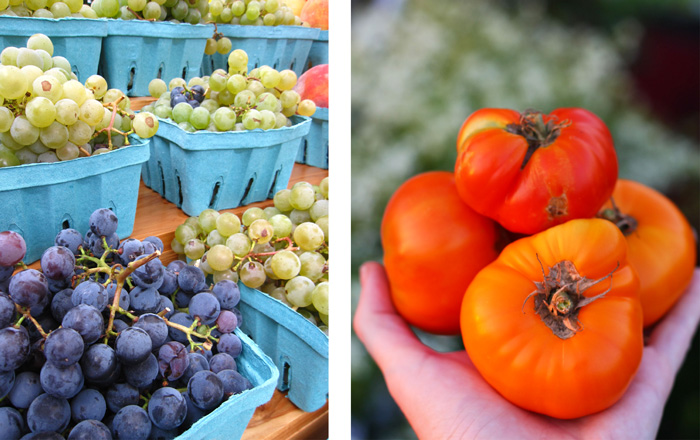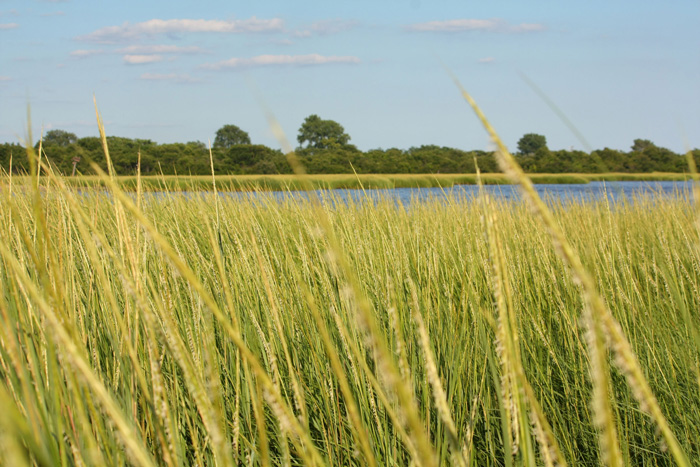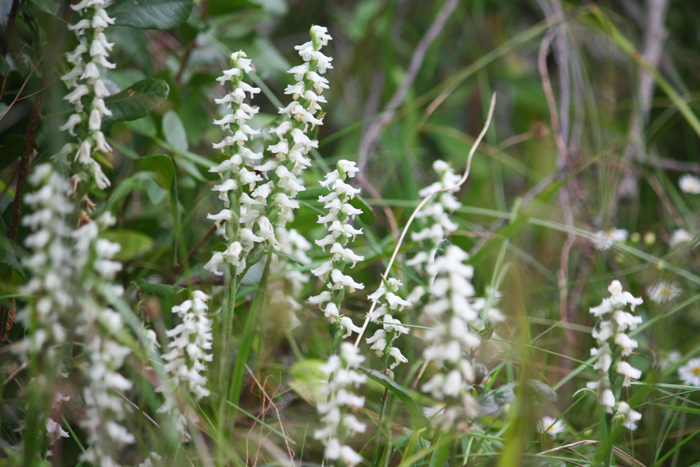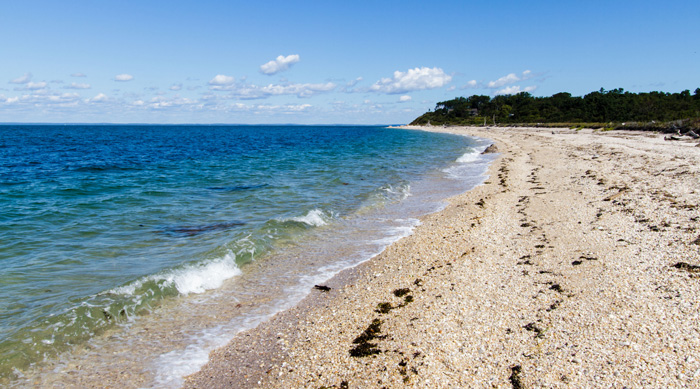New York in September
This article is an excerpt from Marie Viljoen's book 66 Square Feet- A Delicious Life published by Stewart, Tabori & Chang.
A clarity of light and air arrives. One morning, in the acute perspective that September gives to every building, roof, and tree, we know that summer is over. It is a relief.
The sky is an unrivalled blue. Every skyline is sharpened and defined.
Streets are long and deep shadows are explicit. Colors are vibrant. Each exquisite silver
scallop of the Chrysler Building is visible for miles as the dry, dense
air that precedes cold weather penetrates the city and brings it into focus.
Summer’s heat has brought a premature carpet of dry leaves to the bluestone sidewalks so that we crush them underfoot and smell a memory half
extinct, barely accessible and long ago. We are scenting fall.
For the first time since June we walk outside without breaking into a
sweat. At night the air has an edge that makes us think about what sweaters
are for, and we discover moth holes in our favorite pullovers. Coats remain a
distant memory, and hang like a threat in the closet.
 At the farmers’ markets a never-ending glut of tomatoes and late summer
eggplants and corn still piles high on tables and is picked over fretfully by
the same shoppers who pined for them all the long winter. Fickle, we are
impatient for change. Early Seckel pears fill wooden crates. Round mountains of plums give me ideas. Concord grapes are ripe at last, in dark purple
and green bloom. Honeybees hover over the musky syrup that oozes from
spoiled and sampled bunches. I start to eat my grapes before I have reached
the subway platform, the loose skins slipping onto my tongue and swallowed
after the soft pulp. Walking in the labyrinth of tiled tunnels under Union
Square, ducking lower into the retained heat that recalls soaking summer,
this single mouthful puts me immediately beneath the Van Heerdens’ grape
arbor behind their house on Marquard Crescent in Bloemfontein, where as
a little girl I first tasted the musk of Catawbas, a close Concord relative, and
unusual in South Africa.
At the farmers’ markets a never-ending glut of tomatoes and late summer
eggplants and corn still piles high on tables and is picked over fretfully by
the same shoppers who pined for them all the long winter. Fickle, we are
impatient for change. Early Seckel pears fill wooden crates. Round mountains of plums give me ideas. Concord grapes are ripe at last, in dark purple
and green bloom. Honeybees hover over the musky syrup that oozes from
spoiled and sampled bunches. I start to eat my grapes before I have reached
the subway platform, the loose skins slipping onto my tongue and swallowed
after the soft pulp. Walking in the labyrinth of tiled tunnels under Union
Square, ducking lower into the retained heat that recalls soaking summer,
this single mouthful puts me immediately beneath the Van Heerdens’ grape
arbor behind their house on Marquard Crescent in Bloemfontein, where as
a little girl I first tasted the musk of Catawbas, a close Concord relative, and
unusual in South Africa.
On a blue weekend we ride the A train, skimming the surface of Jamaica
Bay where the tracks cross it on their way to the Far Rockaways. We disembark on the island of Broad Channel. It is a community of modest beach houses,
low chain-link fences, clean streets, cemented front yards, beware of dog
signs guarding chipped garden gnomes who preside over gardens of gravel
and fake flowers. Every wooden utility pole flies an American flag. You can
hear a pin drop. On the wide Crossbay Boulevard we take a right, and hike
for another ten minutes down one of the worst-maintained and weed-sprouting sidewalks in the city and on to the Jamaica Bay Wildlife Refuge, whose
two parts straddle the boulevard.
 We turn sharply east, past the sign warning of deer ticks, into the shade
through a tunnel of white birch trees. The city disappears. At Big John’s Pond,
a family of black-crowned night-herons dozes on a fallen branch tilting
toward the water. A giant egret is frozen in fishing position above the lily
pads.
We turn sharply east, past the sign warning of deer ticks, into the shade
through a tunnel of white birch trees. The city disappears. At Big John’s Pond,
a family of black-crowned night-herons dozes on a fallen branch tilting
toward the water. A giant egret is frozen in fishing position above the lily
pads.
On the East Pond, scores of white swans float in front of a palisade of trees
beginning to tint orange and studded with roosting egrets. The ascending
thunder of the jets across the water at JFK starts to feel like part of the
weather. On a Sunday afternoon there is no one else in sight.
Here is goldenrod, the harbinger of fall, tilting above the last transparent
flowers of purple false foxgloves. Nearby in the rain-fed grass are the low
stems of nodding ladies’ tresses, a clear white orchid. This is New York City.
 The Refuge on the other side of the boulevard is another country—the
wide open west. The air is a constant salted breeze off the bay. Small waves
lap the beach where smooth cordgrass is a supple ruffle on the shoreline. At
low tide the beach broadens and a walk around its damp skirt reveals clam
shells, horseshoe crab skeletons as fortified as medieval body armor, emerald
pieces of sea lettuce, and the ugly flotsam and jetsam of a city. An osprey sails
overhead. A black skimmer flies just above the water, its long red toucan beak
leaving a slim and precise trail on the surface.
The Refuge on the other side of the boulevard is another country—the
wide open west. The air is a constant salted breeze off the bay. Small waves
lap the beach where smooth cordgrass is a supple ruffle on the shoreline. At
low tide the beach broadens and a walk around its damp skirt reveals clam
shells, horseshoe crab skeletons as fortified as medieval body armor, emerald
pieces of sea lettuce, and the ugly flotsam and jetsam of a city. An osprey sails
overhead. A black skimmer flies just above the water, its long red toucan beak
leaving a slim and precise trail on the surface.
The resin of bayberry bruises the air when I crush a leaf in my fingers. The
shrubs’ branches are crowded with waxy blue berries. Tart autumn olives are
ripe, bright scarlet skins flecked with silver. Spangled in their fretwork of
slim leaves, small white asters are beginning to bloom. The ivy that twines up
the dry reeds is turning crimson. The season tilts.
We take a day’s break beyond the borders of the city and drive out to the
beautiful North Fork, as far from Brooklyn as we can get while remaining
on Long Island. The blue lasts as far as we can see, transparent blue water
meeting clear blue sky. One hundred miles northeast of home it is cooler
by several degrees, the season a week or two ahead, lapped by the Atlantic
breeze. We have driven through fields of late Queen Anne’s lace, yellow
streamers of solidago, and white mounds of starry asters in the fields and roadsides. Waves break cleanly onto sand cobbled with pebbles and transparently washed shells. Our picnic spread on the beach tastes better than a story—cucumbers and salt, thin ham and a baguette, and local North Fork wine. There is longing in my husband’s green eyes, and I know that the sea is calling him. He lived for a decade in it. We drive back, our approach to the city slowing as traffic increases and the silhouettes of the mass of stalled cars ahead begin to halo in the bright, sinking sun.
 In the dusk of midweek Brooklyn, we sit on the grassy hill at Pier 1 and
look far out toward the Statue of Liberty and the Staten Island ferries that
cross the harbor every thirty minutes in their rush hour. We sip cold riesling
that turns golden in the glasses as the sun loses its grip on the skyline, throwing us into the cold shadow of skyscrapers.
In the dusk of midweek Brooklyn, we sit on the grassy hill at Pier 1 and
look far out toward the Statue of Liberty and the Staten Island ferries that
cross the harbor every thirty minutes in their rush hour. We sip cold riesling
that turns golden in the glasses as the sun loses its grip on the skyline, throwing us into the cold shadow of skyscrapers.
We shiver. And that feels good.
Concord Grape Granita
Concords are grapes with personality. Here the musky essence of the fruit is
captured in a simple, crackling glassful of scented ice.
MAKES 3 CUPS (720 ML)
6 cups (900 g) Concord grapes
1 tablespoon fresh lemon juice
Crush the fruit lightly and heat with 1/3 cup (80 g) of water in a covered saucepan. Simmer gently for 10 minutes until the grapes have exuded much of
their juice. Strain the liquid through a sieve into a bowl, mashing the grapes
lightly to extract as much juice as possible. You should have about 2 cups
(480 ml).
Add the lemon juice. Transfer the juice to a bowl and freeze. Check on it
after 2 hours. As soon as it begins to freeze, scratch the frozen part free,
into the unset liquid. Check and scratch every hour. The more often you
scratch, the better the crystals will be.
Serve in small glasses.
Photo credits: Marie Viljoen and Vincent Mounier (bottom photo).

